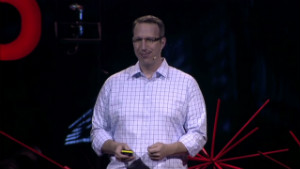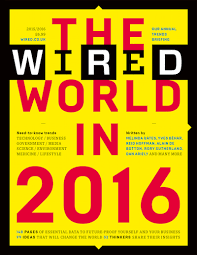The future of science and technology sounds so promising. Unprecedented advances in computing, robotics, artificial intelligence, genetics, neuroscience and biotechnology hold the potential to radically transform our world for the better and create mass abundance for all…
The future of science and technology sounds so promising. Unprecedented advances in computing, robotics, artificial intelligence, genetics, neuroscience and biotechnology hold the potential to radically transform our world for the better and create mass abundance for all.
I sincerely want to believe in this techno-utopian vision of things to come, but my work as a police officer and global security strategist working in more than 70 countries around the world has taught me that there is a darker side to these emerging technologies.
The criminal underground is highly innovative and often acts as an early adopter of emerging technologies. As a young police officer, I observed gang members and drug dealers using beepers and mobile phones, long before they were in common use by the general public. Today, criminals are even building their own encrypted radio communications networks, such as the
nationwide system developed by narco cartels in Mexico.
Technology has made our world increasingly open, and for the most part that has huge benefits for society. Nevertheless, all of this openness may have unintended consequences. Take, for example, the 2008 terrorist assault on Mumbai, India. The perpetrators were armed with AK-47s, explosives and hand grenades. But heavy artillery is nothing new in terrorist operations. The
lethal innovation was the way that the terrorists used modern information
communications technologies, including smartphones, satellite imagery and night-vision goggles to locate additional victims and slaughter them.
Moreover, the terrorists created their own operations center across the border in Pakistan, where they monitored global news broadcasts, online reporting and social media in real time, leveraging the public’s photos, videos and social network updates to kill more people.
The terrorists in the Mumbai incident even used search engines during their attack to identify individual hostages and to determine, based upon their backgrounds, who should live or and who should die. These innovations gave terrorists unprecedented situational awareness and tactical advantage over the police and the government.
Newer forms of technology are also subject to criminal misuse. Robots are becoming more commonplace, and international organized crime groups and terrorists have lost no time in deploying these technologies as part of their field operations. For example, drug traffickers in Latin America are using
robotic submarines to deliver thousands of tons of cocaine annually to the United States.
Last year, the
FBI arrested a man in Boston who planned to use remote-controlled robotic aircraft packed with explosives to attack both the U.S. Pentagon and Capitol building. In the future, as robots become more widely deployed, so too could their criminal use and exploitation.
Advances in the life sciences means it is now possible to design DNA on a computer screen and send the DNA code to a “bio printer” for assembly. Our ability to reprogram DNA itself will undoubtedly lead to great advances in medicine, but the danger is that these same techniques can be used to modify viruses, like H5N1 influenza, to become more and more lethal, potentially affecting millions around the globe. To hackers, DNA is just another operating system waiting to be hacked.
We are at the dawn of an exponentially advancing technological arms race between people who are using technology for good and those who are using it for ill.
Though such battles have gone on since the beginning of time, what has changed is the pace of innovation. New technologies and capabilities are emerging so quickly, it becomes increasingly likely they will outpace the capabilities of public safety officials to respond. The threat is serious, and the time to prepare for it is now. I can assure you that the terrorists and criminals are.
Technology is proliferating at an exponential pace and despite law enforcement’s best efforts, cybercrime grows unabated. In coming years, we will witness an explosion in the use of robotics, artificial intelligence, nanotechnology and synthetic biology. There is little to suggest police will be any more prepared for these emerging threats than they were for basic cyber crimes.
Our current nation-based legal and policing paradigms have clearly not kept pace with the global threat. The paradigm shifts in crime and terrorism call for a shift to a more open and participatory form of law enforcement.
Given the rapid acceleration of technological development, any system that relies on a small, elite force of highly trained government agents may be doomed to failure. Good people in the world far outnumber those with ill intentions. But criminals and terrorists have shown their ability to take up technological arms to harm the general populace. This calls for increased vigilance on the part of ordinary citizens.
The tools to change the world are in everybody’s hands. How we use them is not just up to me, it’s up to all of us.





